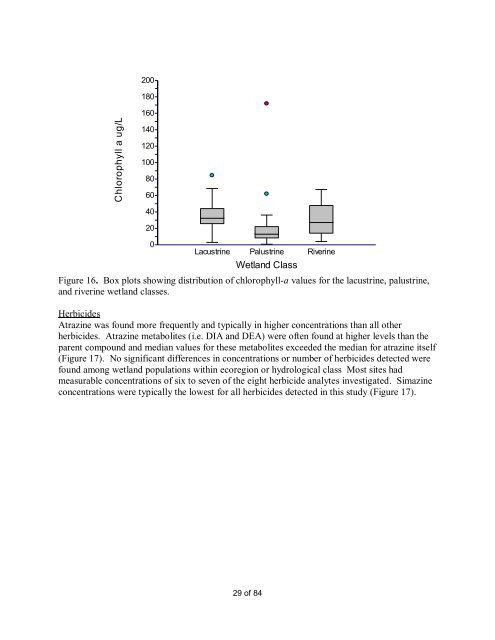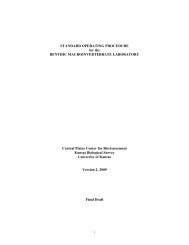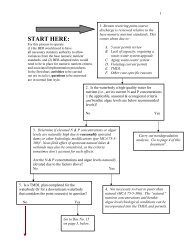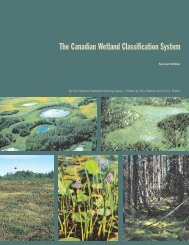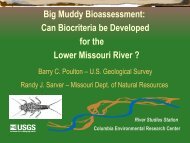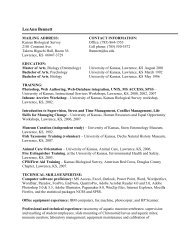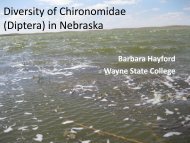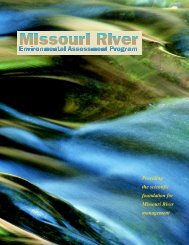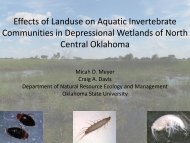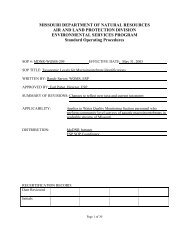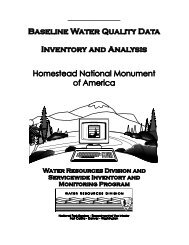Koontz, J., D.G. Huggins, C.C. Freeman, D.S. Baker - Central Plains ...
Koontz, J., D.G. Huggins, C.C. Freeman, D.S. Baker - Central Plains ...
Koontz, J., D.G. Huggins, C.C. Freeman, D.S. Baker - Central Plains ...
Create successful ePaper yourself
Turn your PDF publications into a flip-book with our unique Google optimized e-Paper software.
Chlorophyll a ug/L<br />
200<br />
180<br />
160<br />
140<br />
120<br />
100<br />
80<br />
60<br />
40<br />
20<br />
0<br />
Lacustrine Palustrine Riverine<br />
Wetland Class<br />
Figure 16. Box plots showing distribution of chlorophyll-a values for the lacustrine, palustrine,<br />
and riverine wetland classes.<br />
Herbicides<br />
Atrazine was found more frequently and typically in higher concentrations than all other<br />
herbicides. Atrazine metabolites (i.e. DIA and DEA) were often found at higher levels than the<br />
parent compound and median values for these metabolites exceeded the median for atrazine itself<br />
(Figure 17). No significant differences in concentrations or number of herbicides detected were<br />
found among wetland populations within ecoregion or hydrological class Most sites had<br />
measurable concentrations of six to seven of the eight herbicide analytes investigated. Simazine<br />
concentrations were typically the lowest for all herbicides detected in this study (Figure 17).<br />
29 of 84


